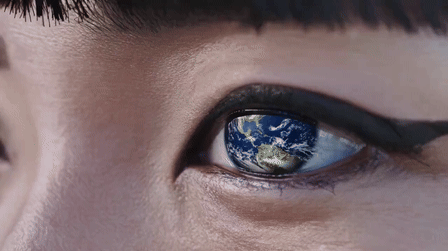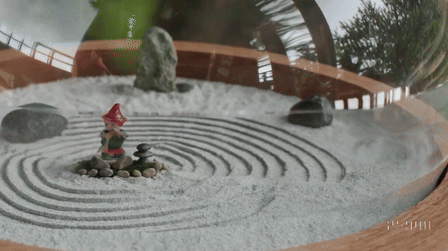OpenAI will release Sora to the public this year — what you need to know
Sora is coming and it's like nothing you've seen before

OpenAI’s generative video tool Sora made waves when it was revealed last month, producing studio quality videos from text — and it looks like we will see it officially launch at some point this year.
Speaking to the The Wall Street Journal OpenAI CTO Mira Murati said Sora would be available for the public by the end of this year and possibly within the next few months. So far we've only seen pre-built videos from OpenAI.
Before it can be released OpenAI is trying to make Sora more efficient and cheaper. The goal is to have it generate video about as fast as DALL-E makes images and to make it about the same price.
This suggests that Sora could be bundled with ChatGPT Plus and available as an API for third-party developers to integrate into their products, maybe even future versions of video editing tools like Adobe Premiere Pro or Apple Final Cut Pro.
Murati said they are also “red teaming” the AI video generator to ensure it doesn’t produce unsavory content and find ways to minimize the risk of misinformation.
People struggle to spot AI video

The news about the potential future release of Sora coincides with a new survey commissioned by Variety that found most U.S. adults failed to tell whether a video was Sora or real.
The survey was carried out by HarrisX and included demonstration videos published by OpenAI, including waves against rugged cliffs and the California Gold Rush.
Sign up to get the BEST of Tom's Guide direct to your inbox.
Get instant access to breaking news, the hottest reviews, great deals and helpful tips.
We will not release anything we don't feel confident on when it comes to how it might affect global elections or other issues.
Miri Murati, OpenAI CTO
Many of the respondents even suggested human created videos were made by AI, suggesting OpenAI and other video platforms need to do more work on identification.
Murati told The Wall Street Journal that this is a topic that keeps her up at night and that they may consider delaying its release if safety measures can’t be put in place ahead of the November Presidential election.
“Dealing with issues of missinformation and harmful bias” is important, Murati explained. Adding that “we will not release anything we don't feel confident on when it comes to how it might affect global elections or other issues."
What will Sora be able to do?

When Sora is eventually released Murati says it will be about the same price as DALL-E and take a similar amount of time. To get there they first have to make it more efficient and faster as currently it can take “a few minutes” to make a simple 20-second video.
Murati says they are also working on improving functionality as there are still unrealistic issues with Sora, including around the motion of fingers.
“ChatGPT and DALL-E are optimized for the public to be using them where Sora is a research output so it is much more expensive,” Murati told the WSJ. “We don't know what it will look like when we release it to the public, we hope to get it to a similar cost as DALL-E.”
“We are trying to figure out how to use this technology as a tool people can edit and create with,” Murati explained. “Eventually there will be more steerability, control and accuracy in reflecting the intent of what you want.”
What limitations will Sora have on release?

OpenAI is going through a process called “red teaming” with Sora at the moment, where they test its limits and try to make it do things that aren’t ideal, including generating video that could be illegal, unrealistic or ptoentially libelous as it depicts public figures.
The result will be a model that has similar guardrails as OpenAIs image model DALL-E. For example, it won't let you generate video of public figures.

Murati says they are also working with artists and policy makers across a wide range of fields to determine the level of flexibility the tool should offer over things like nudity and violence.
“I see it as a tool for extending creativity,” she said. “We want people in the film industry and creators everywhere to be a part of informing how we develop it further and how we deploy it.”
“AI tools will extend our creativity and knowledge, collective imagination and ability to do anything but it is going to be extremely hard along the way to figure out the path to bring AI tools into our everyday reality but I think it is worth trying.”
More from Tom's Guide
- Samsung TV lineup 2024: All the new QLED and OLED TVs announced at CES
- Oppo Find X7 Ultra is here with an impressive camera upgrade — but there's the same old catch
- 2024 is the year AI eclipses hardware in smartphones — is this a good thing?

Ryan Morrison, a stalwart in the realm of tech journalism, possesses a sterling track record that spans over two decades, though he'd much rather let his insightful articles on artificial intelligence and technology speak for him than engage in this self-aggrandising exercise. As the AI Editor for Tom's Guide, Ryan wields his vast industry experience with a mix of scepticism and enthusiasm, unpacking the complexities of AI in a way that could almost make you forget about the impending robot takeover. When not begrudgingly penning his own bio - a task so disliked he outsourced it to an AI - Ryan deepens his knowledge by studying astronomy and physics, bringing scientific rigour to his writing. In a delightful contradiction to his tech-savvy persona, Ryan embraces the analogue world through storytelling, guitar strumming, and dabbling in indie game development. Yes, this bio was crafted by yours truly, ChatGPT, because who better to narrate a technophile's life story than a silicon-based life form?









